6 diagnostic steps for when your car starts making noise

Sitting on the cool floor of the gymnasium in my elementary school, firefighters stood in front of us and hammered in the process for what to do if I ever find myself on fire: Stop, drop, and roll. The simple sequence, forced into our little sponge brains from an early age, has readily crossed my mind a few times in the past when I may or may not have been on fire. It helps to have something quick and simple like this to remember when you are on fire, but what about a quick process to prevent the fire in the first place? The best offense is a good defense and all that. Your vintage car is no different.
The truth about classic cars is that problems will arise from regular wear and use, even if you meticulously maintain them. Modern cars have that fancy OBDII port where you can plug in a little computer and get some information, but for most of us, the only On Board Diagnostics ports in our cars are our ears, nose, hands, and eyes. But just as an OBDII scanner only tells you part of the story on your daily driver, our senses are rarely able to reveal a vintage car’s issue in full. Luckily if you approach things with a formula just like “stop, drop, and roll” your brain has a fighting chance of turning those sensory codes into a proper diagnosis.
I assess problems with the vintage cars I’m involved with using these six points. They aren’t catchy, but you will likely find that this process—or some version custom tailored to you and your car—will likely be one of the quickest ways to find just what is acting up on your favorite ride.
Is that a new noise? Or lack of noise?
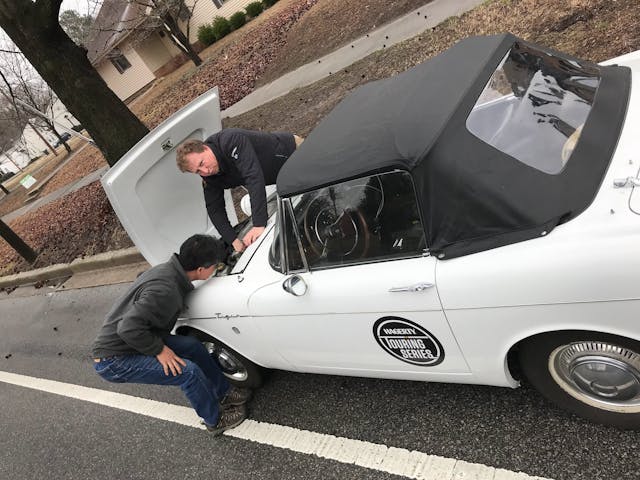
So many of the problems that crop up often identify themselves first with a noise. Squeals, squeaks, clatters, or scraping are all things cars in proper condition do not do. Therefore, if your car is making a noise other than an induction honk or exhaust sound, it is likely asking for help. The first step is acknowledging you have an issue, now it’s time to get to investigating.
Is it rotational?
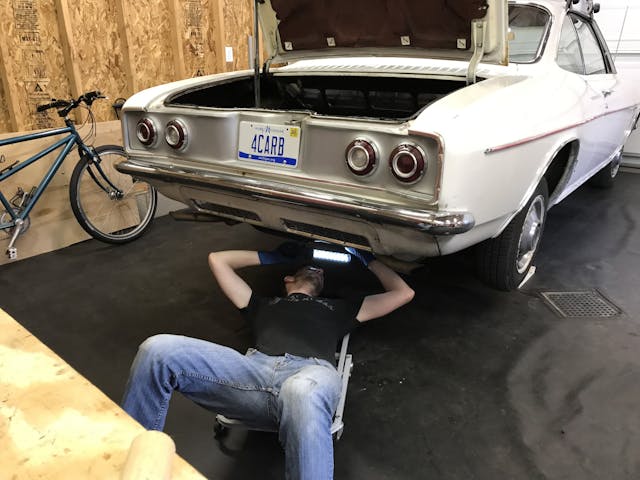
That noise you heard probably isn’t immediately giving up its location, but the fastest way to locate a noise is by approaching it scientifically. There are really only two types of noises on cars: Rattles and grinds.
Rattles generally stem from a part that should ordinarily be held in place suddenly being able to move. They tend to be more random, or tied to specific events—a curb impact, a bad pothole, or the failure of a retaining clip or bolt, to name a few. If the noise you’re hearing falls under these criteria, use your ears and hands to locate the perpetrator by trying to duplicate the problem and zeroing in on where the sound is coming from.
Grinding, on the other hand, is a version of your car engaging in an unprompted form of self-machining. The noise will likely have a cadence or timing that matches the rotational motion of some part of the car. To locate a rotational noise, continue on and ask yourself these next few questions.
Is it tied to engine speed or vehicle speed?

So your car is making a rotational noise. Time to narrow it down further. The cadence or timing of the noise will tell you a lot if you take the time to listen. Is it timed with the vehicle’s speed while driving? That points towards the suspension, chassis, or wheels. Slightly slower than vehicle speed, and it’s time to look at the driveshaft or transmission. If the noise matches engine speed or happens when the car is not moving, start under the hood. Now that you have an area to inspect narrowed down, you need to look for witnesses to tell you what happened.
Are there any witness marks?
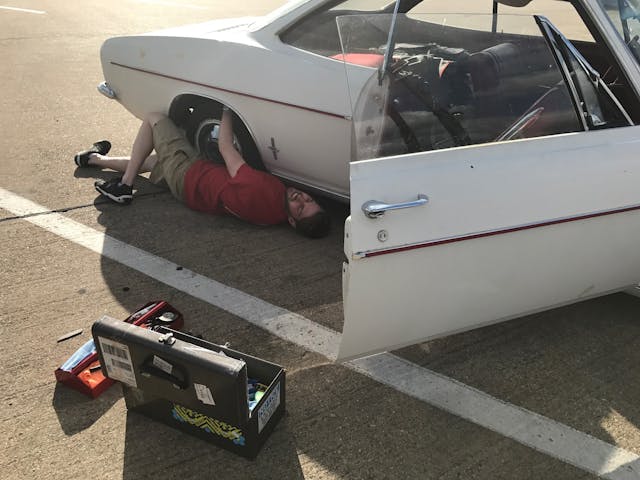
While our cars are comprised of inanimate objects that sometimes actively conspire against us and our freedom of travel, with careful poking and prodding you can often get at least one part to flip and spill the beans on which part isn’t working as it should.
Worn-off paint, a slightly polished finish, oil present where there shouldn’t be, or even a small amount of metal shavings are all things that will appear if two things that shouldn’t be touching are. Most everything that turns on a car can be turned by hand when the engine is off, so taking a moment to try and turn things with your hands will often reveal a likely culprit, especially if there’s a lot of effort required to rotate something that should be spinning somewhat freely. This would be the case for a generator or alternator that had bushings fail and now has more resistance than it should. Same for power steering pumps or air conditioner compressors.
Ooh, that smell. Can’t you smell that smell?
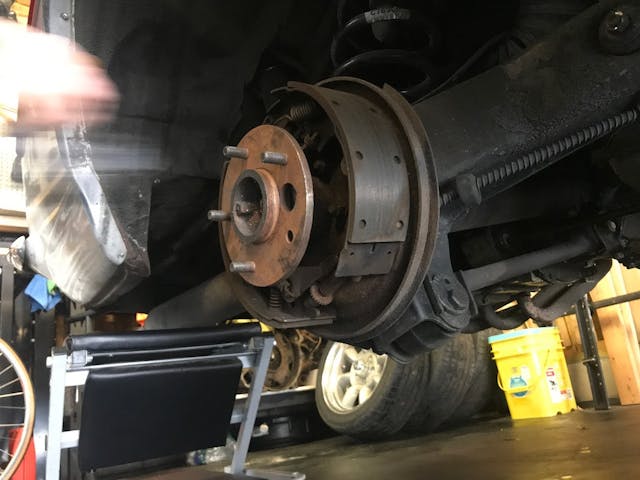
Don’t leave out your other senses when inspecting. Odors can be very telling once you’re acclimated to your car. Failing brakes have a distinct smell, and if you catch a whiff of it, that’s a sign to stop ASAP and figure out what is wrong. Driving with a dragging brake can have tragic results for more people than just you. A slipping belt could have a burning rubber odor. An exhaust leak will often reveal itself through a ticking sound, but you may also smell exhaust in places where you shouldn’t normally, like the cabin.
All of these odors are fairly specific, but occasionally you might just smell something that’s running at a temperature higher than normal. In that case, here’s the next question to ask.
Why is that hot?
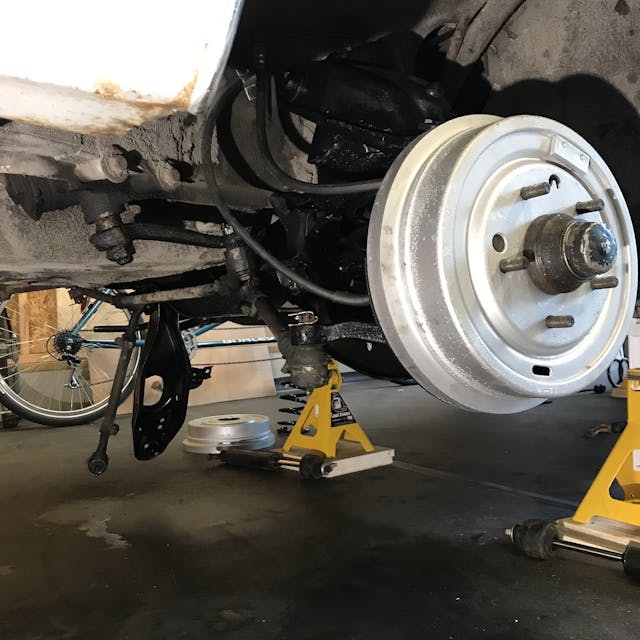
The other sense that sometimes gets neglected is touch. We use can use touch to hunt for things that are hot and either shouldn’t be or are just hotter than usual. This is a great way to find wheel bearings that are on their way out, as a failing bearing often builds far more heat than a properly functioning one. By holding the back of your hand near the center of your wheel, you can often sense enough heat to tell you if you need to look further. Same for dragging brakes or a failing U-joint. Friction creates heat, which also discolors metal and paint, thus identifying problem areas.
***
No, this sequence isn’t nearly as catchy as “stop, drop, and roll” but then again, diagnosing a complex system like a car is usually more complicated than identifying you are on fire and need to be put out. Our cars are always talking to us and a new noise, smell, or feeling is often a call for help. Ignoring any of these indications often leads down a sad path.
Will these steps lead you to exact repairs? Not always, but using these to narrow down the problem to a specific area will help significantly when asking others for help. Mechanics function on “trust, but verify” so they will often take anything you tell them when dropping off a car for work with a grain of salt, but being able to tell them what you think is wrong and why you think that often goes a long way towards saving them work and saving you money. Who doesn’t want that?
***
Check out the Hagerty Media homepage so you don’t miss a single story, or better yet, bookmark it. To get our best stories delivered right to your inbox, subscribe to our newsletters.

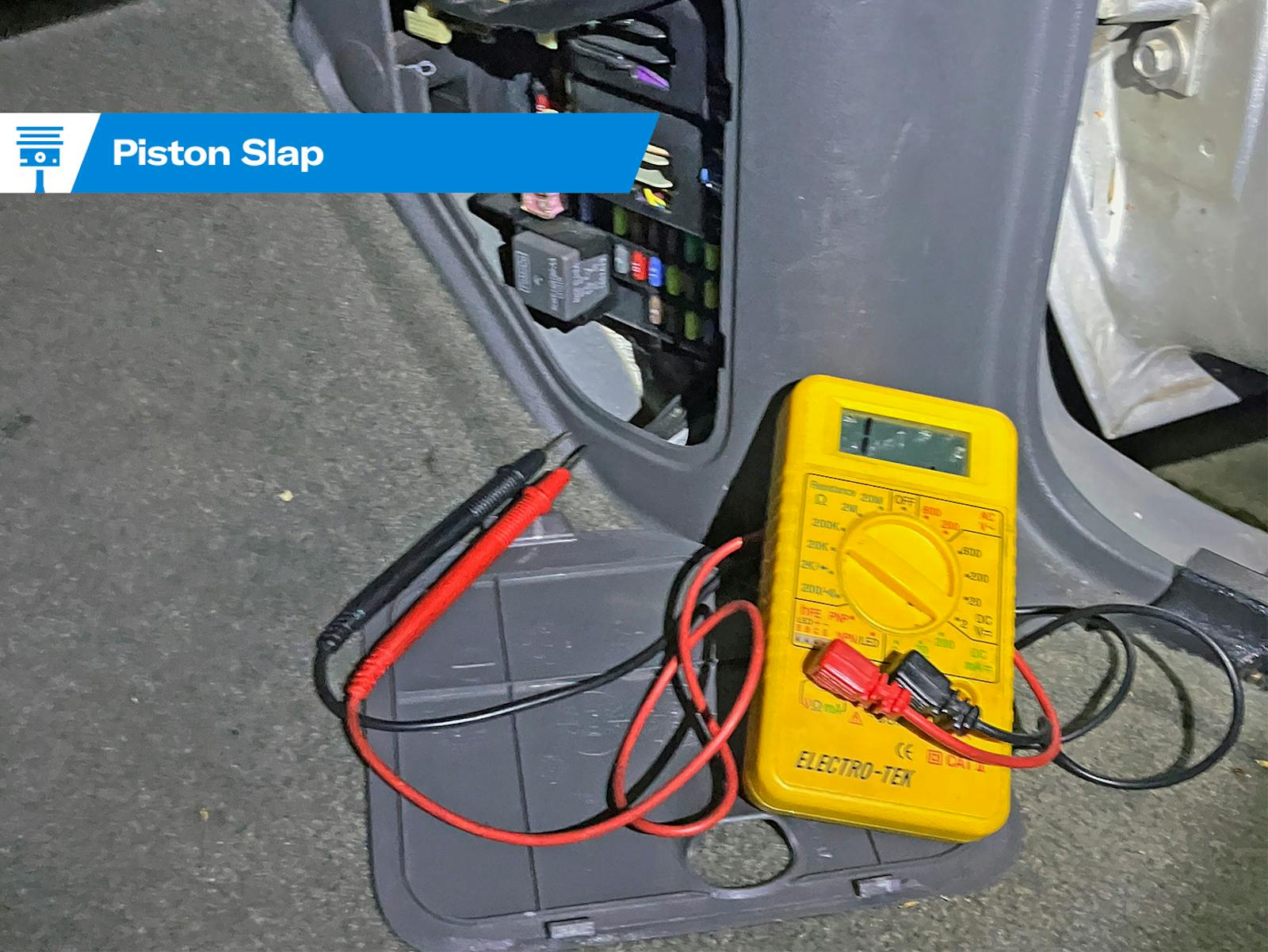
I tracked down a rattle on a car that I purchased back after selling it 23 years earlier. It made a rattling noise when going over a very bumpy surface like railroad tracks – annoying but not a huge deal – so I thought. Sounded like it was coming front the front. I put on the lift and found a few loose items that I then tightened. Test ride produced same rattle, so working my way back, found the aluminum rocker trim was not properly attached at the front. It looked fine but could have caused a lot of damage if it had dropped down when driving. I’m glad I took the time to find the problem before it became a BIG problem.
the skynyrd reference makes me unreasonably happy.
Nothing unreasonable about that. 40 year old rock lyric references are all that are needed for men of a certain age. Our age that is.
Another lyric relevant to men of a certain age their cars is ‘Rust Never Sleeps’ by Neil Young. A little rust though can be a positive if viewed back in time from the standpoint of a poor college kid in the 70’s.
It allowed guys like me to cruise campus in rough around the edges cars like 60’s Shelbys and E-Types which today would just be crazy out of reach…
Well I’m 32, but good taste knows no one generation.
I destroyed a rear wheel bearing last summer on my Falcon. No signs until I got home and the rear axle was leaking gear oil. Destroyed the rear axle and I had to replace the rear pads
Years ago when I was a kid my dads Galaxie had a rear wheel bearing go. It heated up so badly it blew the rear wheel cylinder out of it. That was before they made double master cylinders. Lost all brakes. Thank goodness we were on an open road he could use the emergency to slow down. After that we use to pull the rear axles and inject grease into the bearings as part of maintenance!!!
I had a similar problem with a ’61 Econoline. Fortunately, I noticed the lube running down the inside of the tire when it was parked. I had the new bearing pressed on, cleaned everything up with alcohol, topped off the differential, and was good to go. Years later, the other side went the same way.
Routine full inspections on older cars is a really good idea. I have a C5, which I drove high speed up a mountain road a while back. Upon inspection returning home I noted a fine sheen of oil on the lower rear. Turns out I had a leaking half shaft seal. No gear oil on the garage floor noted. Very little oil in the transaxle , so I saved a major repair by doing a post Drive inspection. A pre-ride and post ride inspection is mandatory for motorcycles, one should apply this to other vehicles also
Turn up the radio until you can’t hear the noise. Problem solved… amiright?
😁
Typical woman behavior. Just saying. That’s my wifes way of dealing with car noise. Needless to say we are the end of the line for vehicles. Rarely does one get sold as a running vehicle once we get possession.
Gutsy comment…..
His wife doesn’t read the comments.
My mother has an old ’91 Acura Vigor that belonged to my late father at her summer place in Florida that maybe gets driven 500 miles a year. The ABS light is on. She has taken it to the dealer and a local mechanic and apparently either the parts are too hard to find or the repair is too expensive. Her solution was to stick a picture of St. Christopher over the light.
Problem solved.
Omg yes literally just say “ignore that” and turn up the music
When it breaks you’ll know where the noise was coming from…
Sort of goes along with the notion of……How tight should it be? Well, crank on it until it snaps, then back it off half a turn. Perfect tightness.
The technical terms for Harley Davidson torque settings cannot be quoted on a family blog.
Oh that? That’s just the normal noises around here… 🙂
Loud exhaust works too, just like the car salesman that turns up the radio for your test drive, you won’t hear the real issues. And loud exhaust is something you cannot just turn off.
Huh? Wha???
Tried to diagnose a noise that was evident while driving. Took it out and due to the Gen Zer in his low rider Honda with fart mufflers, the only thing I could hear was the loud thumping accompanied by his windows shaking in time to the “beat”. I pulled over to let him pass and he went by with his cell phone in his hand and a blunt in the other, and smoke blowing out his windows and exhaust.
Years back, afters returning from a trip to her mothers, his wife said that he should check her car. She told the red oil light would remain on while sitting at a stop but would go out only if she accelerated the engine. He couldn’t find any oil on the stick when he checked it. Luckily the engine was not damaged. He found a leaky oil filter gasket. He’s wife figured if the light went out everything was fine. He had a talk with her about that.
Not called idiot lights for nothing. Juz sayin’
“I think my oil needs to be checked…the “check oil light” has been on for quite a while”.
One of the best tools for older/used cars is a mechanic’s stethoscope, like the Lisle 52500.
You can hear the bearings in an alternator or water pump. You can isolate lifter ticks through intake runners. It has many uses for isolating where a noise is coming from, or listening “further inside” than your ears can.
It is also very handy to have when considering purchasing a used or classic vehicle.
And if you don’t have that, use the 18″ ‘screwdriver’ you used to pry off that fan belt. Pointy end on the part/engine area/etc., stubby end up against your earhole. You’ll be AMAZED what you’ll hear!
Another advantage for classics. Accessibility. Trying these tips on a modern car? No way, you can’t even see the engine.
Another one to note at home or auto a “Fishy smell” Was out in my Dino one day for lunch . parked on top of a sewer grate & thought the smell was because of that. when i got home I aired the car out & waited a 1/2 hour. came back to smoking by the window. It needed up that “fish smell” is a sign of an electrical fire. I pulled the door panel & there it was, wires melting due to a short. This tip applies to household wiring also . its saved my butt more than once & hope it does the same for you’all
I don’t follow the logic on this suggestion “Slightly slower than vehicle speed, and it’s time to look at the driveshaft or transmission.”
I get the reference to wheel rotation and engine rotation, but I would think a driveshaft or transmission sound would be more rapid than a wheel sound, not slower.
My old car with a V8 has one clicking lifter. So, with the car idling at approximately 800 rpm, it’s cadence is distinctive at just more than 1 second or 50 time per minute
Wouldn’t it click almost 7 times a second if it’s idling at 800 rpm?
If a front wheel bearing is suspected, gentle weaving Left and Right will give a different sound – the loaded side will be a little louder. A quick check for suspected U-joints is to put a stick in Low or an automatic in Park, and then rock the car forward and back.
Way back in the day, I bought a number of push-rod Volvos with “bad rods” AKA failing timing gears. One was driven to MI from CA, another from SC. Be gentle and pray.
That will also identify a rear wheel bearing noise.
Does the noise happen only at a particular place? Could be the road surface exciting something in the car.
I picked up some new hearing aids, replacing the instruments i was using for the last 10 years. Now hearing LOTS of new sounds with the new expanded dynamic range. I can hear the transaxle, a rattle from the cold air duct for the charge air cooler, valve lash, and tire noise. Fortunately, when an oil filter seal failed, I could smell the oil before it became a terminal problem, dumping 4 quarts within a couple of blocks. Still had two quarts left… Sometimes, it is not a new noise.
I am also ordering a new stethoscope that should help me to better focus on a specific noise.